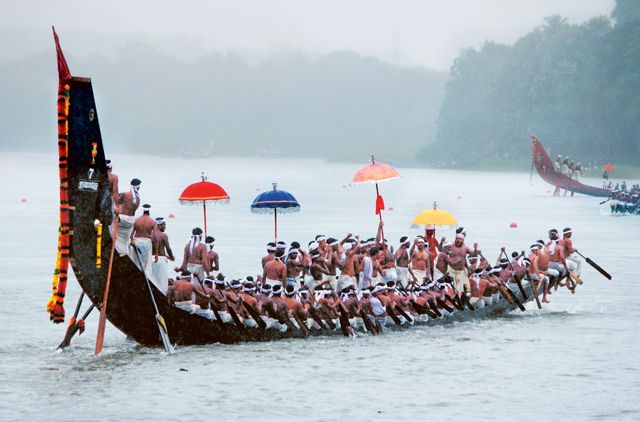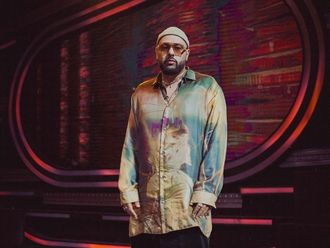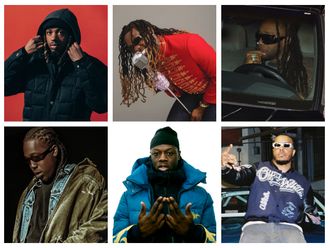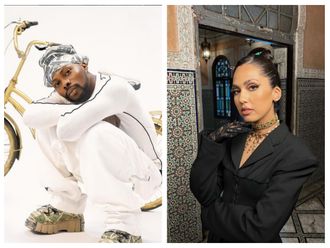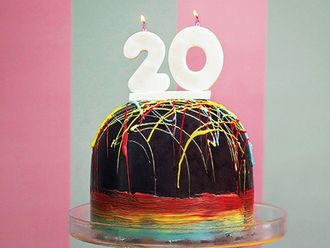Men in tiger masks, boats carrying food for gods, processions of elephants, flowers carpeting floors and a messenger ringing in the festival at every home. These are just some of the ways that Onam is celebrated in various parts of Kerala, starting with Atham (the first day of Onam) to Thiruvonam (the final day) and beyond (the official government celebrations end on Chathayam, the second day after Thiruvonam).
"Historically, Onam celebrations were believed to have begun only in the 8th century AD. Between 5th century and 7th century AD, Buddhism was prevalent in Kerala. The story behind Onam celebrates the legend of Vamana, the fifth incarnation of Lord Vishnu and how he aided the gods in defeating the powerful king Mahabali. While this is myth, in social anthropology one can link it to the emergence of Brahmanical society in Kerala," says Srijith Sridharan, founder of transINdventures, a management consultancy working across disciplines to bring lesser-known aspects of Kerala into the mainstream.
Sridharan has made it his business to discover Kerala’s lesser-known textile, festive and industrial traditions, and help bring them to the forefront.
Aranmula boat race
Aranmula on the banks of River Pamba in Pathanamthitta district is home to a Parthasarathi temple and a beautiful palace. The government has designated it a rural tourism centre. The Aranmula Vallamkali (snake boat carnival) held during Onam, is a major draw, bringing in visitors from both inside and outside Kerala.
"The Aranmula boat race is not a competitive race; it’s a drill or a fiesta," says Sridharan. This year the event takes place on September 2, close on the heels of Thiruvonam, which is on August 29. The race is dedicated to the Parthasarathi temple in Aranmula.
"On the day of the race, Palliyodams (the royal boats) come to Aranmula to escort the star of the show, the Garuda-faced Thiruvonathoni, carrying provisions and vegetables for the Onam feast at the temple. People believe that gods travel to the shores across Aranmula and you can find them in every boat on the water that day. People shower these boats with gifts of plantains among other things," says Sridharan.
A special feast called the Rohini Vallasadya is served to the oarsmen of the boats at the temple premises. While the water carnival is a photographer’s delight, Aranmula has other souvenirs on offer as well.
The place is synonymous with its very own metal mirrors — Aranmula Kannadi — a unique craft not to be found elsewhere in the world. These cast-metal mirrors with handles are made only by one extended family based in Aranmula.
Folk arts
If you are inclined towards folk arts and wish to polish your skills, take a look at the arts institutes. "The cultural institute by the government of Kerala teaches everything from mural painting to Chenda or drums and other temple arts," says Sridharan.
Aranmula was home to Vijnana Kala Vedi Cultural Centre from 1976 to 2009. It was run by Louba Schild, a Frenchwoman, who ensured that interested Indians or foreigners learnt Ayurveda, Kathakali, classical dances, Carnatic music, Kerala-style cooking, languages (Malayalam, Sanskrit and Hindi) and kalaripayattu, the martial art tradition.
Institutions such as Samskrithy offer courses such as dividing basic Kathakali into its many facets including music, gestures and make-up, each taught separately, with a duration of one week to a year, depending on the student.
Traditional dances
Watch or participate in Thumbi Thullal. Unless you spent your childhood in Kerala, in the Central Travancore area, you are unlikely to have seen this aspect of Onam.
"Thumbi Thullal, which translated means dragon-fly dance, is centred around the thumba flower (leucas aspera). As children we used to look for this plant during Onam and give it for pookkalam, the traditional floral decorations. In the evening six to seven women would sit with the flower, with one lead singer in the centre, singing songs. Nowadays, only the tourism department or the movies show this," says Sridharan.
Dance to Thiruvathirakali
This folk dance form, says Sridharan, is more visible today than many others. The dance, with a passing resemblance to the dandiya from Gujarat (both involve women dancing in circles, clapping on each other’s hands) is seen often in areas around Central Travancore.
Many Malayali Samajams include it in their Onam celebrations. "Involving 10 to 12 women dancing in a circle with a lamp in the centre, this folk art form is seeing a lot of encouragement. You even see stage performances," he says.
Athachamayam
At Thripunithura in Kochi, Athachamayam celebrations start ten days ahead of Onam, ending on Thiruvonam. It provides a spectacular glimpse of Kerala’s various folk art forms. "It’s like a ten-day fair that has the town all decked up in flowers and lamps. There are competitions, performances and processions," Sridharan says.
You may come across Pulikali performers in the procession, who are painted and dressed in bright yellow, red and black, playing the tiger and the hunter.
"Unlike the past, when full-body make-up was used, Pulikali performers now wear masks on their faces. The percussion instruments they dance to are called Udukku and Thakil. Pulikali translates to ‘play of the tigers’ and these performances add a lot of colour to the celebrations," says Sridharan.


